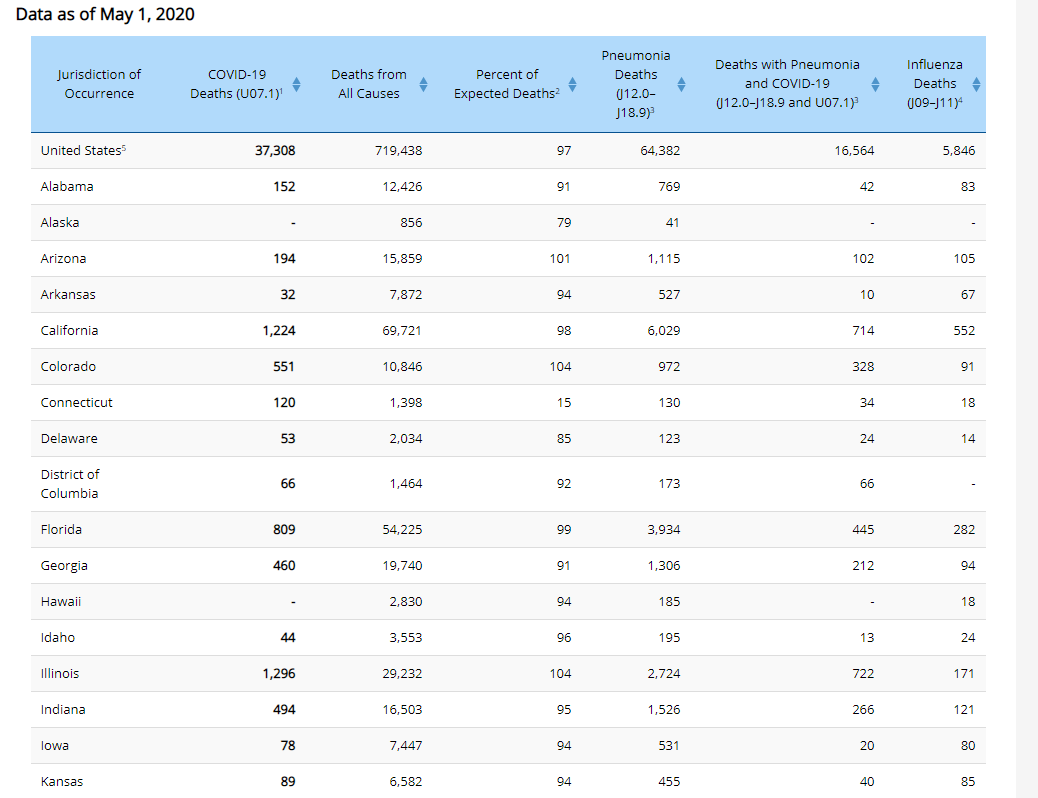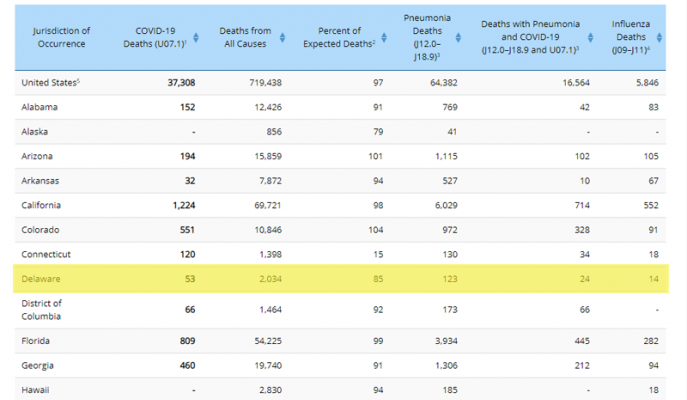Over the last couple of weeks, we’ve noticed that several commenters have been posting numbers from the CDC on our Facebook page.
The posts mention that the latest numbers posted on the CDC’s website do not match the numbers provided by the state. The fact that the numbers are different is causing some to doubt the official counts.
Why The Numbers Are Different
According to the CDC’s website, state death counts may not match counts from other sources, such as media reports or numbers from county health departments. The CDC’s counts often track 1–2 weeks behind other data for a number of reasons: Death certificates take time to be completed. There are many steps involved in completing and submitting a death certificate. Waiting for test results can create additional delays. States report at different rates. Currently, 63% of all U.S. deaths are reported within 10 days of the date of death, but there is significant variation among jurisdictions. It takes extra time to code COVID-19 deaths. While 80% of deaths are electronically processed and coded by NCHS within minutes, most deaths from COVID-19 must be coded manually, which takes an average of 7 days. Other reporting systems use different definitions or methods for counting deaths.
Provisional counts are not final and are subject to change. Counts from previous weeks are continually revised as additional records are received and processed. Provisional data are not yet complete. Counts will not include all deaths that occurred during a given time period, especially for more recent periods. However, we can estimate how complete our numbers are by looking at the average number of deaths reported in previous years. Death counts should not be compared across jurisdictions. Some jurisdictions report deaths on a daily basis, while others report deaths weekly or monthly. In addition, vital record reporting may also be affected or delayed by COVID-19 related response activities.
Mixing COVID Deaths With Non-COVID Deaths
Adding to the commenters’ doubts is the mixing of numbers. Both the CDC and the states are now counting presumed COVID-19 deaths with COVID-19 confirmed deaths. This is sure to skew the numbers. It’s not clear why presumed and confirmed deaths are not reported as separate categories.
In the table below you will notice that COVID-19 confirmed deaths are mixed with presumed COVID-19 Deaths. In another column, they’re also mixing Pneumonia and COVID-19 confirmed deaths with presumed COVID-19 Deaths.

NOTE: Number of deaths reported in this table are the total number of deaths received and coded as of the date of analysis and do not represent all deaths that occurred in that period.
*Data during this period are incomplete because of the lag in time between when the death occurred and when the death certificate is completed, submitted to NCHS and processed for reporting purposes. This delay can range from 1 week to 8 weeks or more, depending on the jurisdiction, age, and cause of death.
1 Deaths with confirmed or presumed COVID-19, coded to ICD–10 code U07.1.
2 Percent of expected deaths is the number of deaths for all causes for this week in 2020 compared to the average number across the same week in 2017–2019.
3 Pneumonia death counts exclude pneumonia deaths involving influenza.
4 Influenza death counts include deaths with pneumonia or COVID-19 also listed as a cause of death.
Over the coming weeks, we will be monitoring the CDC’s number to see if they begin to line up with what the State of Delaware is reporting. We’ll also be trying to nail down how many of the COVID deaths were actually presumed COVID deaths.

